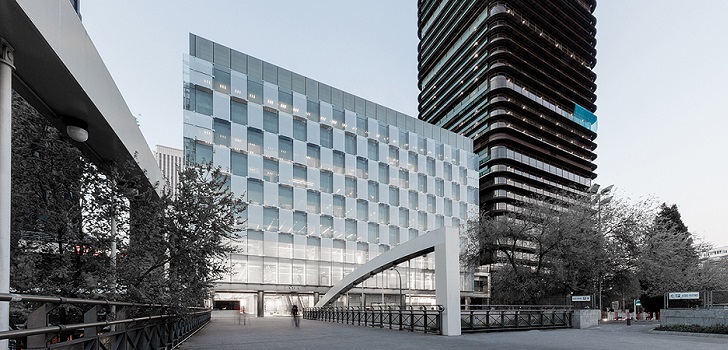Gross margin ‘saves’ Inditex in the quarter with less growth in two decades
The largest fashion retailer worldwide ended the first quarter with a gross margin of 58.9%, the highest since the third quarter of 2017, although sales increase hasn’t been as strong as in the past.

A fiscal quarter boosted by gross margin. Zara owner Inditex, the largest fashion retailer worldwide, ended the first three months of fiscal 2018 with the lowest sales growth of the last twenty years. However, the improved performance on both gross margin and net income, though weak, have saved the financial results of the group, which were described as “satisfactory” by chairman Pablo Isla.
Zara’s parent company ended the first quarter with a turnover of 5.65 billion euros, only 1.53% more than in the same period of 2017. The performance is far away from the double-digit growth rates registered in 2015, 2016 and 2017. Profits between February and April 2018 rose just 2.14% to 668 million euros.
During the results’ presentation, the group alluded for the first time to factors such as the “extreme” weather in some markets and the early Easter to justify the slowdown, added to the ballast of high comps in the first quarter of last year.
But Inditex had once again an ace up its sleeve: gross margin, which has declined in recent quarters, but grew again in the first three months of fiscal 2018 to 58.9%. Compared with other first quarters (when gross margin is traditionally lower because, despite selling at full price, summer garments have a lower price), it’s the highest margin level since the beginning of 2015, when it stood at 59.4%.
The improvement is due, partially, to the fact that the “rapid transition between seasons” that Inditex implemented last year had a neutral impact on gross margin, while it did affected the indicator in the third and fourth quarters of last fiscal year. For 2018, the group maintains a stable margin forecast, with variations of no more than fifty basis points.
At the end of the last fiscal year, the gross margin of the company stood at 56.3%, reaching minimum levels in recent years. Inditex sales grew 8.69% and profit rose 6.68% in 2017. During the year, the company lost steam quarter progressively, with revenue increases of 14.14% in the first quarter, 9.24% in the second, 5.91% in the third and 6.78% in the last period. Profit also began the year rising strongly, with an increase of 18%, but moderated to 1.42% in the second and 2.74% and 7.88% in the next two quarters, respectively.
The company says that the positive impact of the dollar has offset the euro strength
In the first quarter, Inditex also managed to fight against currency headwinds, one of the main threats of these results according to analysts. “The positive impact of the dollar on purchases has compensated for the negative effects of other currencies," said the group’s financial director, Ignacio Fernández, during the conference with analysts.
The bittersweet balance of the first quarter occurs at a time of transformation for Inditex, framed in the global process of adaptation that the fashion industry as a whole is experiencing.
The group, which for years has been emphasizing its omnichannel integration strategy in each results presentation, unveiled its store adjustment plan a few months ago, which has involved 1,046 closures, 2,994 openings and 907 renovations from 2012 to 2017.
The company says that the positive impact of the dollar has offset the negative effect of the euro
Yesterday, the Spanish giant once again emphasized this strategy. In particular, the company has referred to the integration of on and offline stock, which it has described as “very strategic” move. “In terms of cost it has no impact, but it does have a very relevant effect in terms of full price sales, as well as helping in delivery times,” the company pointed out.
At the end of last year, this strategy began to be implemented in Zara in Spain, which allows that if an item runs out on the web but is available in a brick-and-mortar store, the customer can also buy it online. In this case, it favours less stock in the shop at the end of the season.
According to Inditex, this strategy doesn’t involve costs since the technology that allows it, Rfid, is already implemented and no new structure is needed, since online orders are made from the warehouse that already exists in the store and with the existing staff. Throughout this year, the integrated stock will be implemented in all countries in where Zara operates ecommerce platforms.
In parallel, the group has continued to reorganize its store network. The first quarter was the second in its history that Inditex ended up with net closures, with 27 shops less. The company reduced its brick-and-mortar presence of all retail chains except Oysho, Uterqüe and Zara Home. From the company they insist that “it’s better to talk about commercial surface, because it reflects the business evolution better”. In this sense, the company plans to increase its sales floor by 6% this year and between 6% and 8% in the coming years.


info@themds.com
Validation policy for comments:
MDS does not perform prior verification for the publication of comments. However, to prevent anonymous comments from affecting the rights of third parties without the ability to reply, all comments require a valid email address, which won’t be visible or shared.
Enter your name and email address to be able to comment on this news: once you click on the link you will find within your verification email, your comment will be published.